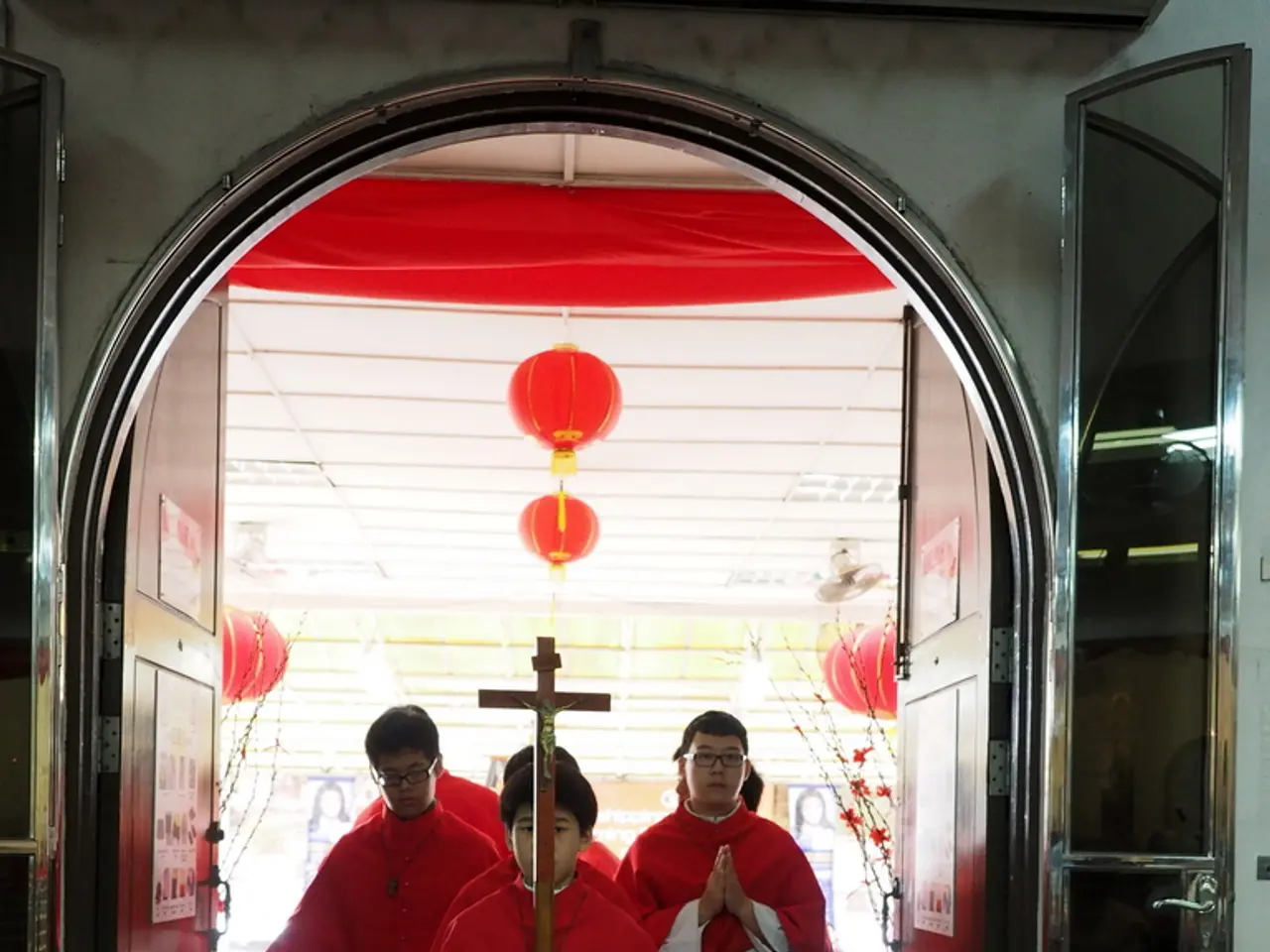Disempowerment of Witches Sought
In the picturesque town of Götzis, Austria, Saint Arbogast holds significant religious and historical importance. This bishop and missionary, traditionally venerated as a key contributor to the Christianization of parts of Europe, is a beloved figure in the region.
Last year, a remarkable 499,239 people reached their pilgrimage goal on the Camino de Santiago, an increase of 49,923 people from 2023. While the Camino de Santiago is not directly associated with Saint Arbogast, his cult is important in the region, and churches named after him serve as pilgrimage destinations. The Saint Arbogast church in Götzis is likely one such notable site for pilgrims in Austria.
The place and valley of Arbogast are named after the saint, who is said to have lived there as a hermit. The Loy Chapel, en route to Arbogast, is significant due to its historical route and patronage. This chapel, in Vorarlberg, is venerated for Saint Loy, also known as Eligius, who is traditionally venerated for various professions.
The Loy Chapel is particularly interesting as it was a place where besoms, or brooms, were offered as gifts for eye ailments and to clean the chapel. According to folk belief, witches could do no more harm and had no power if their broom was locked in a church. Intriguingly, besoms are still placed in the niche above the southern outer chapel of Saint Arbogast in Vorarlberg.
Saint Arbogast is believed to have red hair due to his Irish origin, and people in Vorarlberg call upon him when suffering from fatigue, depression, or foot ailments. The Church of St. Arbogast in St. Arbogast, first mentioned in 1473, is another popular pilgrimage site.
For those interested in exploring pilgrimage locations or traditions in Götzis related to Saint Arbogast, local church records or regional religious tourism guides may offer detailed information. A book titled "Pilgrimage in Vorarlberg" by Susanne and Walter Elsner, featuring 30 pilgrimage sites and contemplative paths, is a valuable resource.
The boom in pilgrimages is evident in Vorarlberg, Austria, according to the Diocese of Feldkirch. In fact, pilgrimage doesn't always have to be a long journey; it can start from one's own doorstep, as emphasized by Birgit Huber. Many people embark on pilgrimages out of a need for a break and a desire to find new support and meaning in life.
In addition to the official Camino de Santiago, Vorarlberg offers various themed paths and local pilgrimage routes, making it an attractive destination for both seasoned and novice pilgrims. Whether you're seeking spiritual intercession, wishing to honor Saint Arbogast's legacy, or simply looking for a meaningful journey, Götzis, Austria, offers a rich pilgrimage experience.
Read also:
- More than 7,000 instances of Chikungunya virus documented in China during significant outbreak
- City Maps for Solingen's Municipal Offices Now Accessible
- Police Update in Mönchengladbach on August 2nd During the Summer Break?
- Event at Ekya School Byrathi Encourages Cultural Interaction and Inspires Creativity within the Realm of Japan Festival





